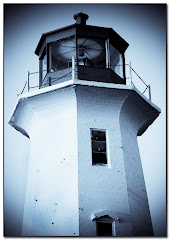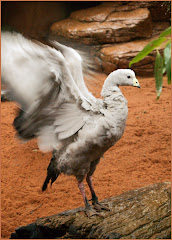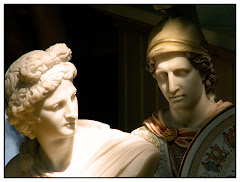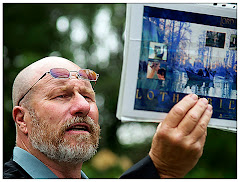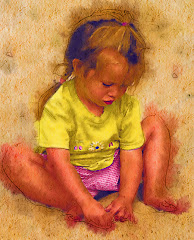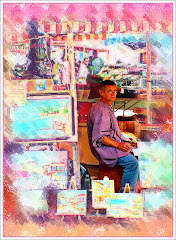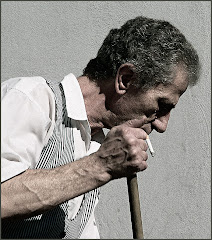
Boca de Valaria didn’t exist thirty years ago. It is a creation of the cruise ship companies. “Boca de” means “Mouth of” and Valaria is the river it’s located on. The cruise ships needed needed a place relatively central that they could build into a viable stop for the thousands of wallet-toting tourists destined for this port each year.
The locals were pleased to accommodate. This is why they come from seven small villages each day the ship comes in.
“Don’t let it freak you out when the kids come up and hold your hand,” declared Hutch, the destination expert on the Pacific Princess. (He has undoubtedly dealt with plenty of freaked out personal space conscious North Americans before.) “They are wonderful people.”
You’d think that with this sort of background that I would hate this place.
I didn’t. I loved it. Honest.
The people there were wonderful, once I got to know them a little. “Getting to know them” means realizing that they are hospitable, pleasant people who make a living by showing off themselves and their village to the tourists. They come up to you, smile and take your hand. You can expect to be gently mobbed when you arrive…and if you relax and remind yourself you aren’t in Kansas anymore, you are in for a wonderful travel experience.
We were, of course, first off the tender boat. The locals were clustered tight at the makeshift pier, almost like someone was paying them to make EVERY tourist feel welcome.
We’d researched this port from home and learned many tourists bring supplies for the local school with them. This seemed a win/win situation for everyone. The tourists get to feel good and the kids get school supplies.

Since Sheree and I entertain kids for a big portion of our living, we decided to make them balloon animals. Balloons pack flat and I have yet to meet a kid who doesn’t love them.
I’d loaded my pockets with balloons and when we got to the end of the “love gauntlet,” Sheree looked at me and said “No time like the present.”
I pulled the first balloon from my pocket. Have you ever seen fish in an aquarium at feeding time? You need simply stand above the waterline holding the tin can and the fish cluster to wherever their little fish brains tell them you are going to be dropping the food.
It was like that. I was immediately surrounded by little people saying “Me! Me! Me!”
I asked them to move back a little and they did – but hands kept reaching even though they had no idea what they were reaching for. The balloon was taken out of my hand before I blew it up. I found myself looking into the large brown eyes of the culprit: a kid of about seven. I smiled. He looked back seriously. I tried to pry his fingers off the balloon. He regarded me evenly and didn’t loosen his grip. I ruffled his hair and pointed to the balloon and then at him. His eyes narrowed with suspicion. Finally, reluctantly, he let go.
I blew the balloon up and made a dog. The kids pressed forward. I think piranha fish learned their techniques from them. I blew on the tail and immediately a bubble of air appeared there. The kids took a collective step backward. There were collective “ooooo” and “ahhhhh” sounds. Then they all pressed forward with renewed cries of “Me! Me! ME! ME!”
I made balloons for about twenty minutes and noticed they were going down far too quickly. I felt something brush my thigh. (It has been my experience from my admittedly limited Amazon exposure that whenever you feel something touching you, you need to investigate right away.) I found a small brown hand in my pocket. The kid had been swiping balloons the whole time.
I closed my hand around his wrist and shook my head. He didn’t let go. I looked up and saw some of the teenage boys standing nearby, laughing and trying to blow the balloons up. No guilt. No one saying “gee, sorry, Mister. I don’t know how this balloon wound up in my hand…”
I was, of course, in their house. If they wanted to swipe the balloons I’d already planned to give to them for free, that was their choice.
I made balloons until they were gone – and kept my pockets zipped.

Boca is a wonderful place to meet people. Parents dress their kids in traditional costumes and you can take their picture. Usually you pass them a dollar for this – which is fine with me, since I usually do that anyway. Everyone will pose for a dollar: the kid with the tarantula, the little girl with the lizard, the man with a jungle pig. These kids handle wildlife with the same ease you would pick up a Coke.
The strange thing is that, while the wildlife is interesting, the real pictures are of the people who live here. Great faces – great clothes. Such colors! And they are literally lined up, wanting you to take shots of them.
While I agree that you don’t get the candid shots you’d prefer – I must also say that the tight crops of great photos are the real gift. For about twenty dollars, I got enough photos to keep me happily Photoshopping for some time.
It started feeling just a little creepy just once. I saw a young girl, maybe fifteen. Very pretty – wearing very little. I saw a number of the cruise ship guys pay a dollar to pose with her. Nothing off color – but it was creeping me out.

Sheree was approached by a lovely older woman who wanted her to take her for a canoe ride for five bucks. She was gone instants later and I didn’t see her again until the end of the day.
She had a wonderful time. On her ride she was taken upriver and shown a couple of villages, one of which had a modern looking school with old but still usable computers. Sheree says she was taken care of like an honored relative.
I took a walk into what the villagers call “The Nature Trail.” It goes about two miles into the jungle. As I stepped onto the trail a young teenager fell into step beside me.
He jerked a thumb to his chest: “Vincent.”
I pointed to myself “David.”
“You want to see?” He asked gesturing to the trail ahead of us.
I thought about it and realized he was offering to give me a tour.
A man tapped me on the shoulder and with a long sideways look at Vincent he spoke out of the corner of his mouth: “They are just looking for a hand-out. Don’t encourage them.”
Instantly I disliked this guy. People forget that they are guests in another country – and there was no way I wanted Vincent to see us
all as tourists and not travelers. I believe there is a basic and profound difference between the two.
I nodded and clapped Vincent on the shoulder: “I see.”
“Keep one hand on your wallet,” warned the guy as we walked away.
I doubt Vincent heard or understood the exchange. If he did, he didn't show it. But the hostile look of the man bristled with suspicion in a language that is universal.
Vincent led me down the trail. I gather it was an old riverbed. He stopped every once in a while to show me the cocoa beans, bright flowers and wildlife. He kept pace tied to mine and I was surprised again at the easy hospitality of these people. They treat their guests with respect but there’s such an easy grace to what they do and the way they do it.
I was blown away again by the life all around me. The sweet scent in the air, the constant motion in the bushes -- the lushness of everything. Vincent, walking through the jungle seemed an extension of all that life, whereas I was patently a visitor here.
He stopped in the middle of the trail and beckoned me over: “Simbolah,” he said, pointing to a tiny brightly colored frog. A macro lens would have been needed to get a shot. But it was a glorious creature. I just enjoyed looking at it for a moment.
Vincent looked at me expectantly: “Simbolah,” he said again. “How you say this?”
“Simbolah,” I repeated.
He laughed out loud and I laughed too. I noticed that many Brazilians cover their mouths when they laugh.
“No, no. How YOU say?”
A light dawned. ‘Oh-ho!’ I thought, which is what I usually say to myself when the clouds clear and I finally understand the actual question. You should try it sometime. Just give yourself a hearty “Oh-HO” to promote cognitive function.
“Frog,” I said, deliberately omitting the “oh ho” stuff, since that would only confuse the issue. “We say ‘frog.’” (I will admit, however, that the notion of a young man in the Amazon jungle saying "oh-ho" to tourists entertained me for an unreasonably long period of time.)
He looked at me thoughtfully.
“Frog,” he said thoughtfully. “Frog.”
Then he nodded and continued down the path. Every once in a while I heard him repeating the word ‘frog.’
We came to the end of the trail and turned back. We passed the time in an easy silence, aside from Vincent occasionally repeating the word ‘frog.’ When we got to the end of the trail, I paid him for his time and we shook hands. I walked away thinking how cool it had been that our lives intersected for that brief time. Here he is: Vincent.

But that’s what travel’s all about.
I started getting just a touch concerned about Sheree by now. It's true that my partner in this life can take care of herself. And if anyone gives her a hard time...well..."I pity the fool."
But her one hour canoe ride had been more than four hours ago – and I still didn’t see her. I cleverly decided to stake out the bar, a raised wooden building where weak but very cold beer was two dollars and whoever approached the bar would be inundated with children asking them to buy pop for them.

I was sitting there, sipping my cold beer, looking out for Sheree when two girls came and sat on the table. They were young – and they inched closer and closer. I smiled and they moved right in. One of them had the most marvelous face: expressive eyes and what I have come to think of as “full on” Brazilian features.

I took their pictures – and showed them the LCD screen. Just as it was with the little girl in Tobago, they got very excited seeing the images. Think about this for a minute: these people have made posing for photos into a cottage industry. Hasn’t anyone ever shown these kids what their pictures look like?
This youngster was off to the races. Cindy Crawford never posed so eloquently. She was serious, she was smiling. She was bold. She was shy. And after each pose she’d come and look at the LCD screen and either smile or frown. The session lasted less than a couple of minutes – but it was another moment of contact between someone from Canada – and someone from the Amazon jungle.
She didn’t speak a word of English.
Vincent barely spoke my language – and I spoke only a few words of Portuguese.
But we communicated perfectly.
I love traveling.
We arrive in Manaus tomorrow. I remember looking at its location on a map. Manaus is deep inside Brazil on the oh-so-exotic Amazon. I am really looking forward to getting there. And I am dreading it too.
It's the last port we're going to...and that means the trip is close to being over. I'd rather not think about it. And when I
do think about it, I remind myself that following our time in Brazil, we are going to spend four days on the equally exotic Florida Keys.
It makes me feel better. A little.
 We return to the boat after our caiman hunt. It's well after midnight and we are tired. Time for something quick to eat and then one last sleep in our stateroom.
We return to the boat after our caiman hunt. It's well after midnight and we are tired. Time for something quick to eat and then one last sleep in our stateroom. We learn the Mercado Marketplace had a fire and most of it is being rebuilt. This explains the clustered huts against the fence. There are hundreds of these selling cheap sunglasses from China, knock off purses, t-shirts, fruits of apparently infinite variety.
We learn the Mercado Marketplace had a fire and most of it is being rebuilt. This explains the clustered huts against the fence. There are hundreds of these selling cheap sunglasses from China, knock off purses, t-shirts, fruits of apparently infinite variety. Inside a building is a meat market. I don't think I would buy here. It's like a buffet line for flies. But the merchants watch us arrive with a distant interest and when we start taking pictures, some of them are entertained enough to pose.
Inside a building is a meat market. I don't think I would buy here. It's like a buffet line for flies. But the merchants watch us arrive with a distant interest and when we start taking pictures, some of them are entertained enough to pose. 












 Tramping through the Amazon jungle requires all your attention. It’s so very humid that the sweat pours off your face, burning your eyes if you forget to wipe it away. The ground is slick. You notice that the sounds of the jungle don’t stop. If anything, they intensify. When you look up it is like you are in a building made of green growing things. You cannot see the sun, although you can feel its heat around you and as it rises from the wet earth the heat is intensified somehow.
Tramping through the Amazon jungle requires all your attention. It’s so very humid that the sweat pours off your face, burning your eyes if you forget to wipe it away. The ground is slick. You notice that the sounds of the jungle don’t stop. If anything, they intensify. When you look up it is like you are in a building made of green growing things. You cannot see the sun, although you can feel its heat around you and as it rises from the wet earth the heat is intensified somehow.
 Your wife crosses toward them. When she walks to the left, the parrots follow, with a strangely graceful waddle. When she walks to the right, they follow and you find yourself thinking of ducks. She laughs and you smile at her with your heart. This woman finds joy in everything.
Your wife crosses toward them. When she walks to the left, the parrots follow, with a strangely graceful waddle. When she walks to the right, they follow and you find yourself thinking of ducks. She laughs and you smile at her with your heart. This woman finds joy in everything.





 There is a courtyard beside the opera house. It is a complex black and white tile, designed to simulate the ebb and flow of waves on the ocean. The guide drones on and I stop to take pictures of it. Frankly, the mosaic is much more interesting than the talk…and I am feeling a little teenager-ish from the unspoken rebuke. Like I don’t know how to use my own camera. Pffft.
There is a courtyard beside the opera house. It is a complex black and white tile, designed to simulate the ebb and flow of waves on the ocean. The guide drones on and I stop to take pictures of it. Frankly, the mosaic is much more interesting than the talk…and I am feeling a little teenager-ish from the unspoken rebuke. Like I don’t know how to use my own camera. Pffft. 






 But that’s what travel’s all about.
But that’s what travel’s all about. I was sitting there, sipping my cold beer, looking out for Sheree when two girls came and sat on the table. They were young – and they inched closer and closer. I smiled and they moved right in. One of them had the most marvelous face: expressive eyes and what I have come to think of as “full on” Brazilian features.
I was sitting there, sipping my cold beer, looking out for Sheree when two girls came and sat on the table. They were young – and they inched closer and closer. I smiled and they moved right in. One of them had the most marvelous face: expressive eyes and what I have come to think of as “full on” Brazilian features.



